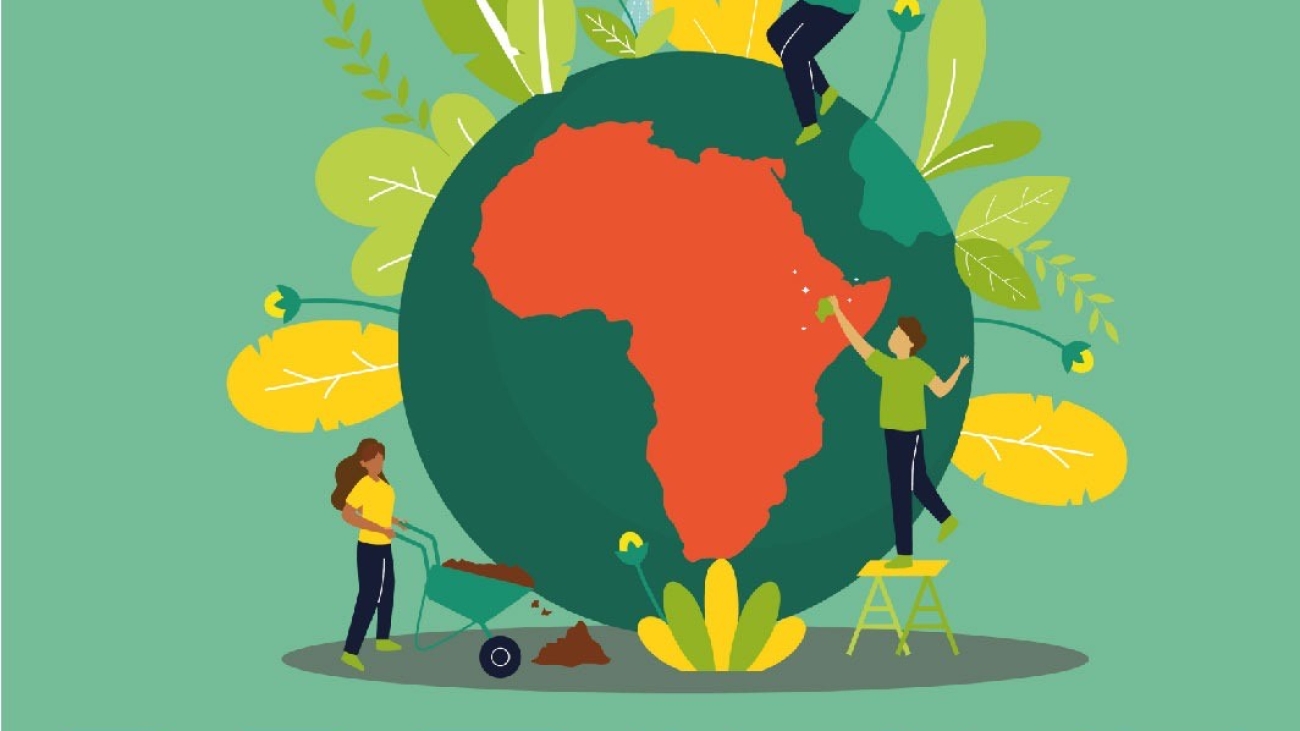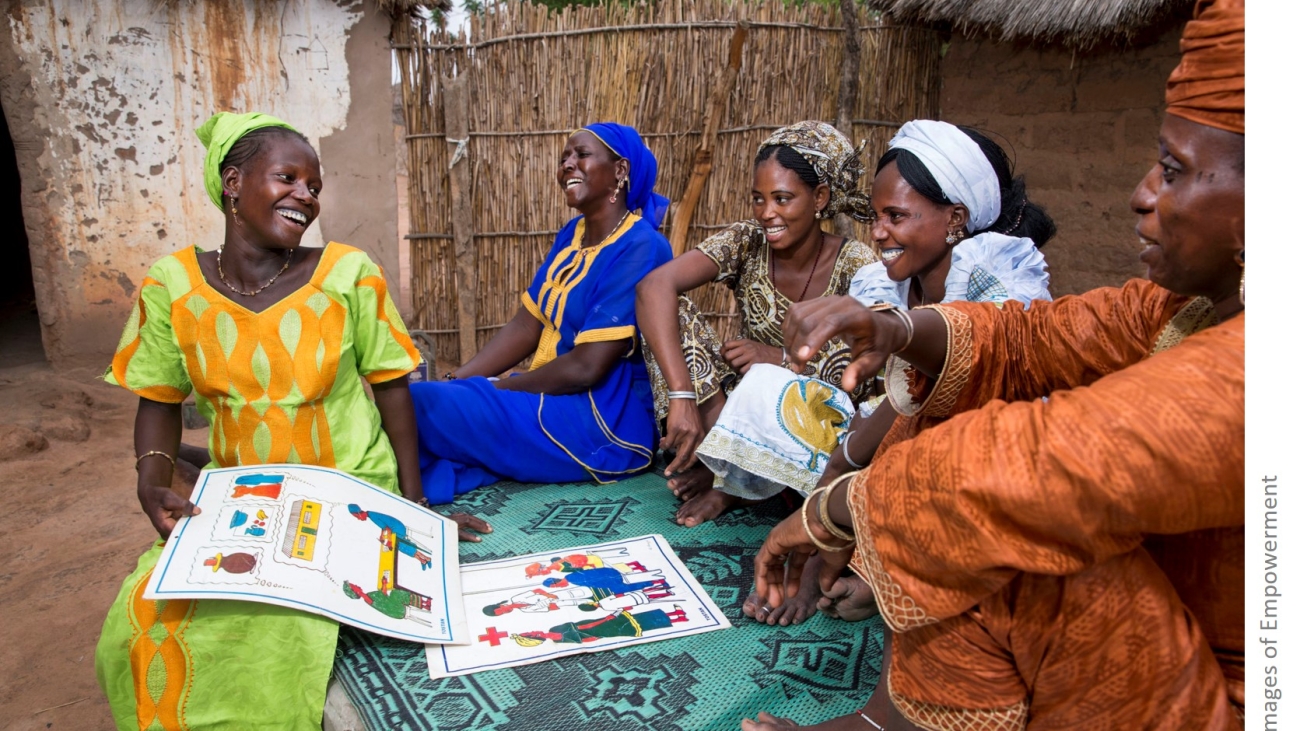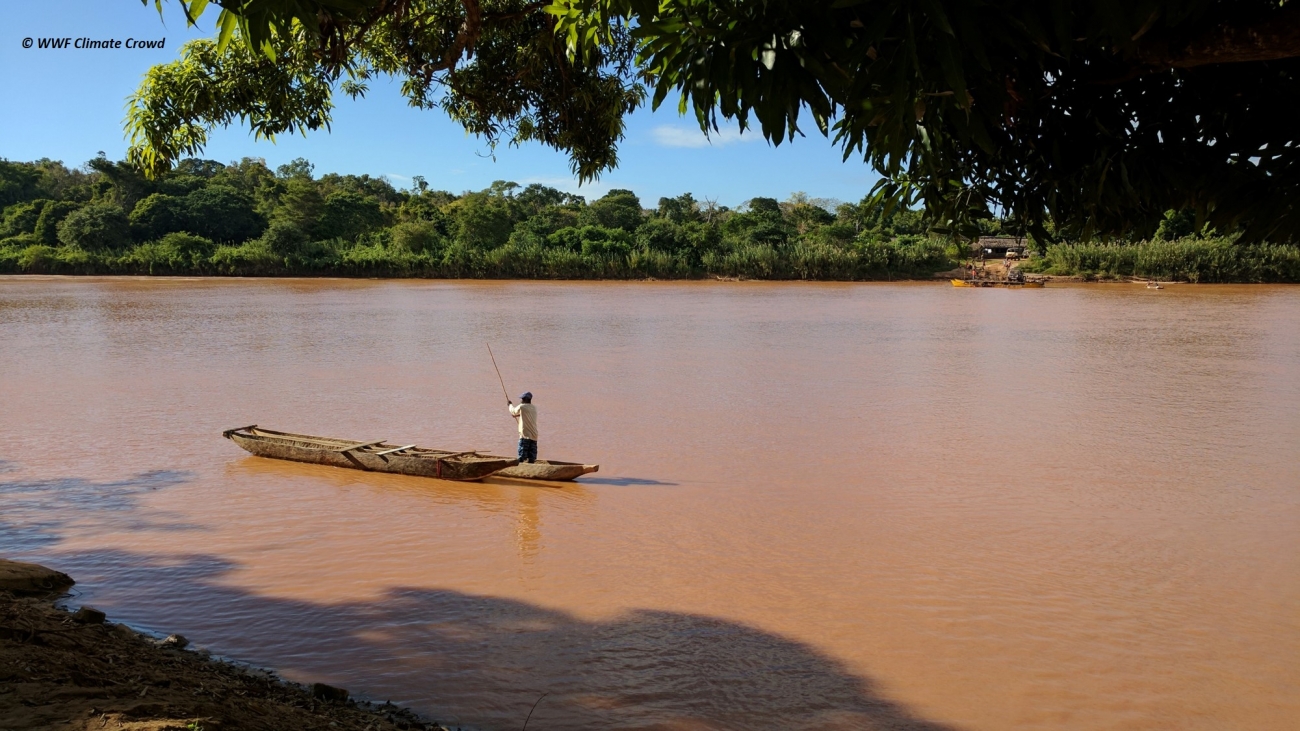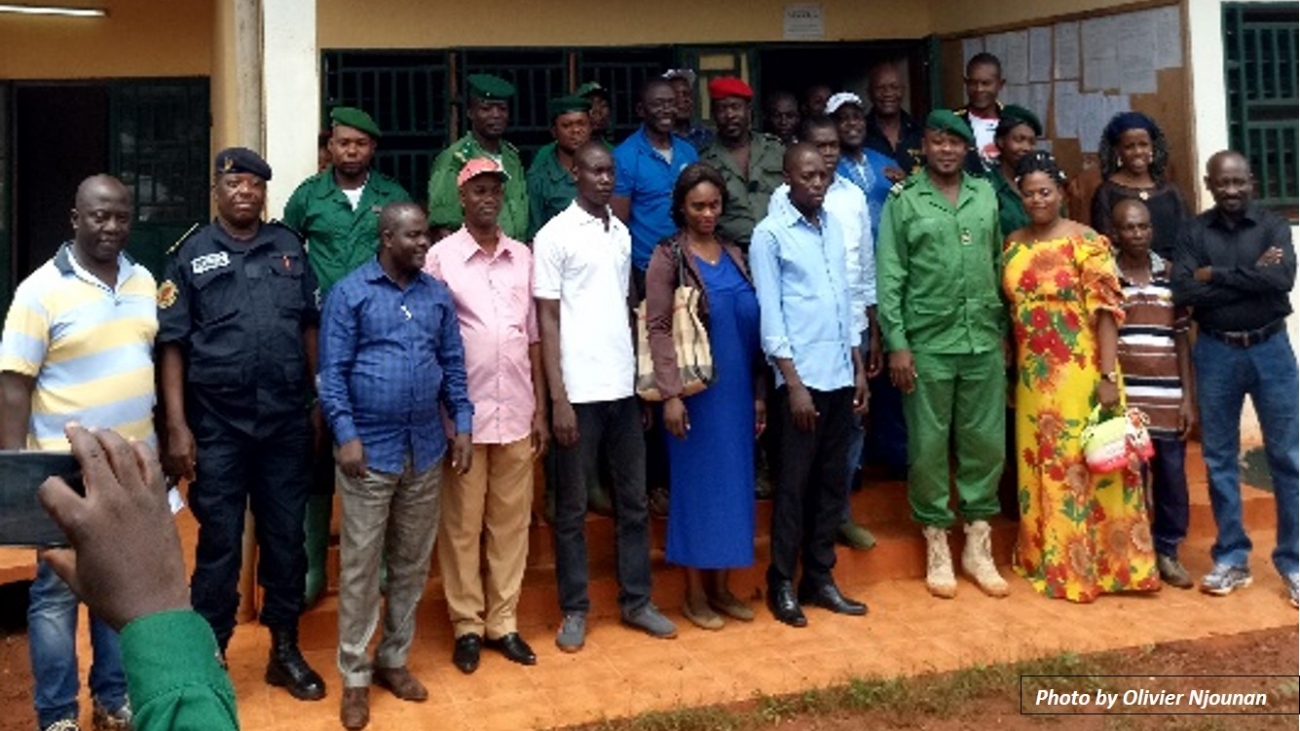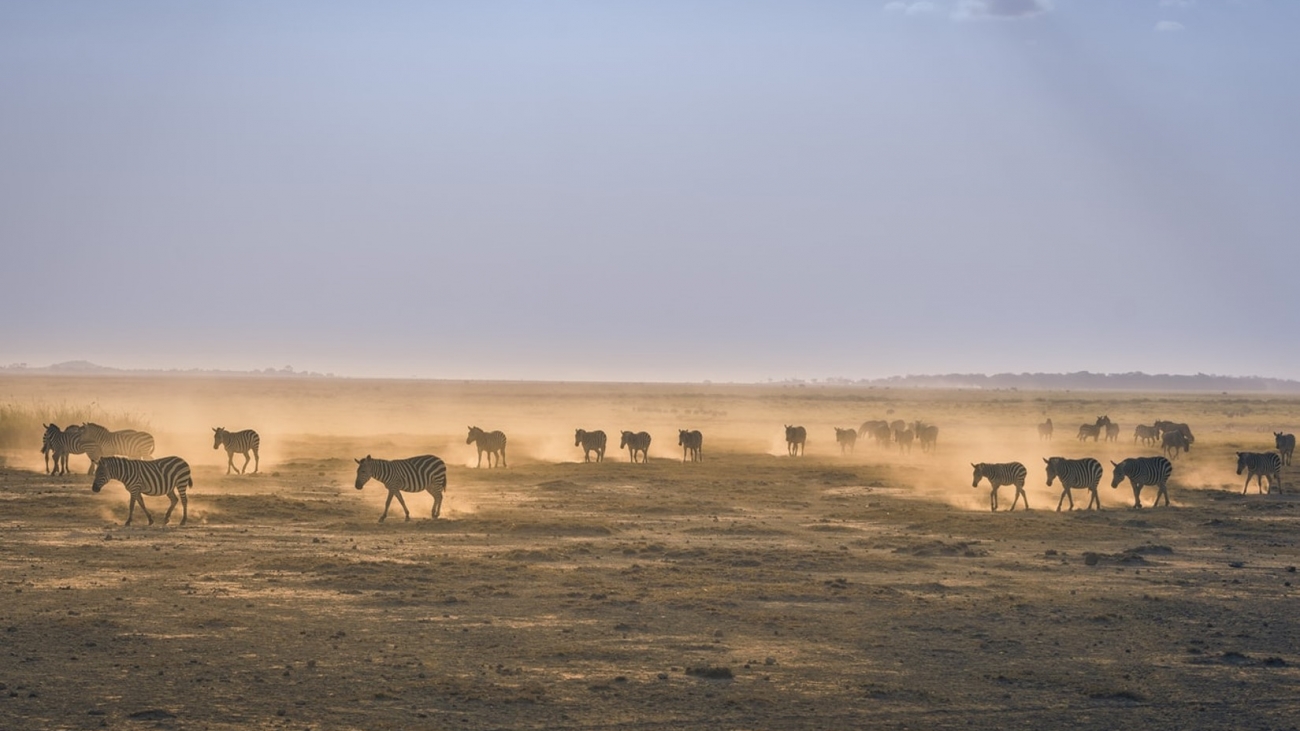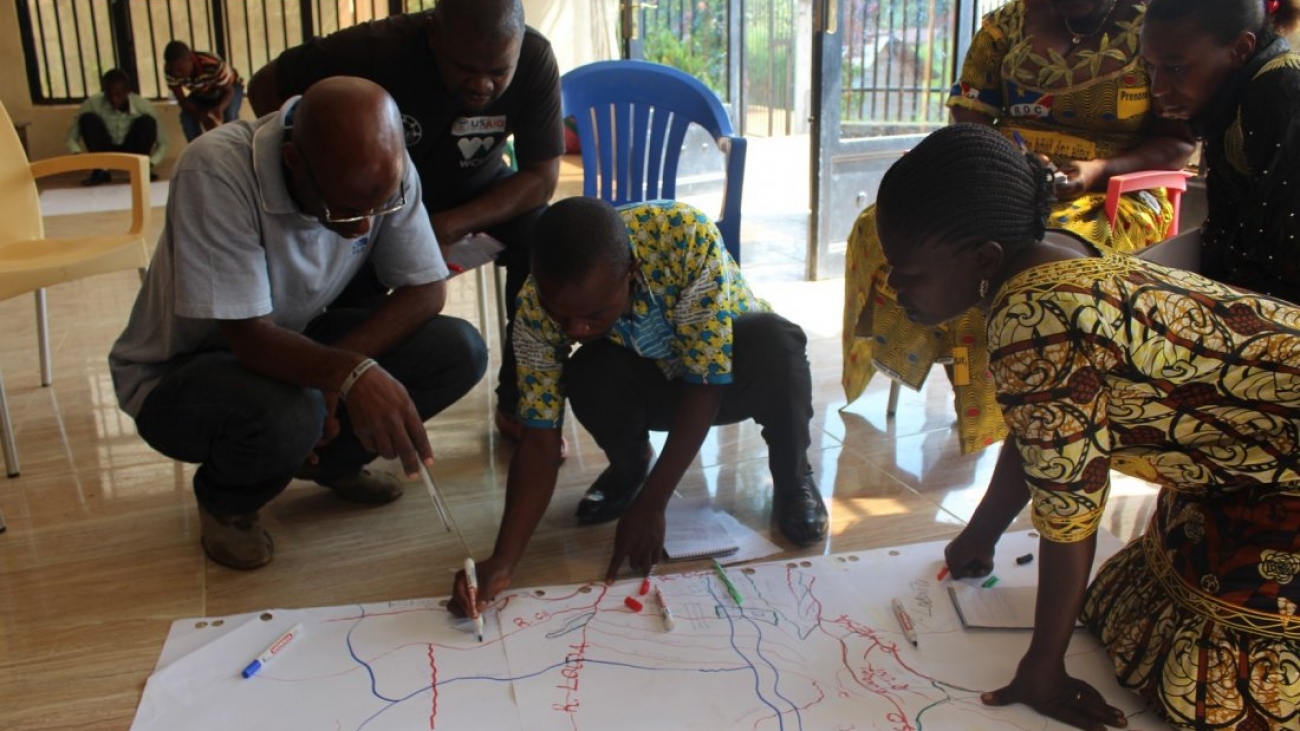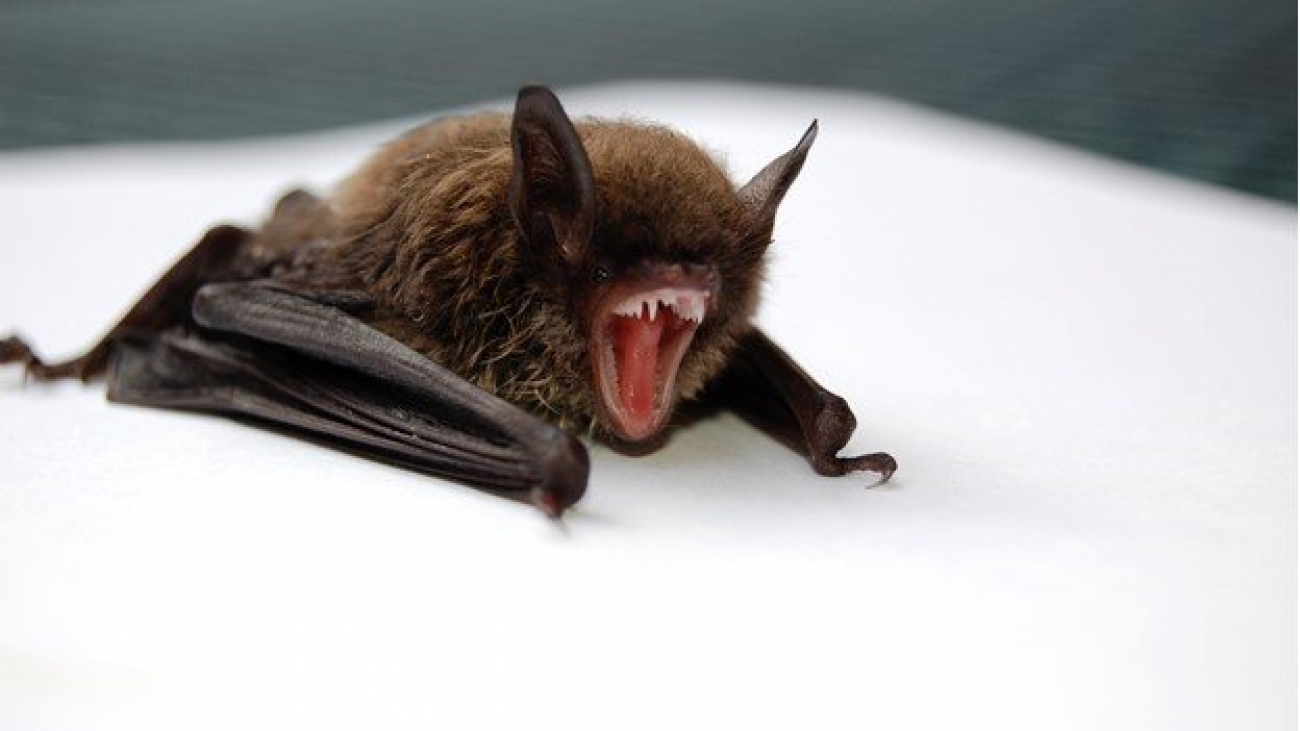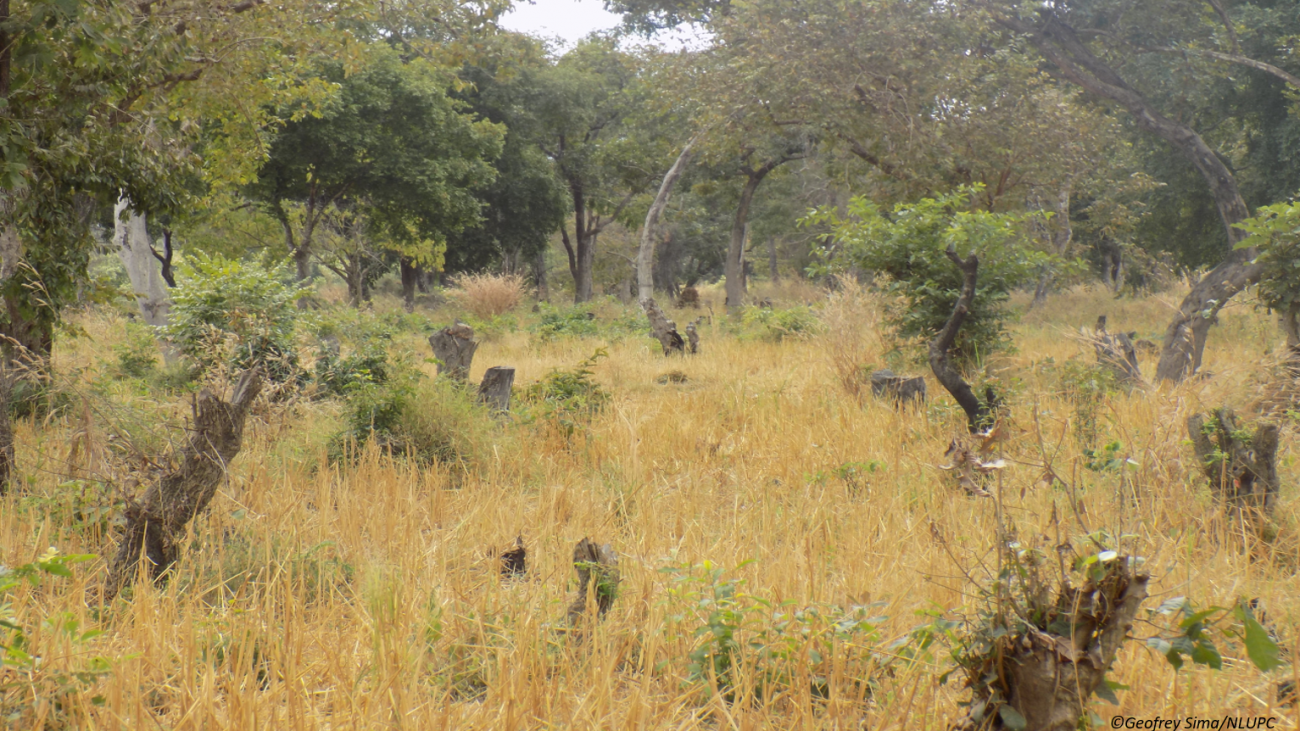ABCG has today, October 19 2022, launched a new podcast series called BREATHE. BREATHE is a podcast series looking to have illuminating discussions around conservation by highlighting the work of individuals and organizations across Africa who are changing the planet for the better one day at a time
Gender Equality Today For a Sustainable Tomorrow: International Women’s Day Message
On this International Women’s Day (IWD) and every day, the members of ABCG join our colleagues and friends in applauding and lauding the critical role women play in climate change mitigation, land, and natural resource management and universally to their contributions to sustainable development and society in general.
Founder of ABCG Member Organization, the Jane Goodall Institute, Wins 2021 Templeton Prize
The naturalist Jane Goodall has been announced as the 2021 winner of the Templeton prize in recognition of her life’s work on animal intelligence and humanity. Goodall, 87, built her global reputation on her groundbreaking studies of chimpanzees in Tanzania in the 1960s
A New Phase of ABCG: Journey to Achieving Greater Impact for the Conservation of African Biodiversity
ABCG is moving into a new phase. We are building from past successes and developing a future for our organization that will allow us to achieve even more for the conservation of African biodiversity and remain a strong, sustainable organization.
To Realized Positive and Lasting Global Health Outcomes, Stakeholder Engagement in Key
One key lesson that ABCG learned at the onset of the Population Health and Environment project was that a difference of perception between actors involved in the activities caused differential levels of engagement. Therefore, one of the most important activity of the project is the mobilization of different stakeholder groups around the project. These mobilization events ensure sufficient and clear understanding of the project’s goals, specific project objectives and expected results.
Launch of the Africa Protected Areas Congress
The Minister of Environment for Rwanda Dr Jeanne d’Arc Mujawamariya and the Africa Protected Areas Congress Secretariat, on Tuesday 20 April 2021, launched the Africa Protected Areas Congress (APAC) in Kigali Rwanda. The APAC initiative, the first of its kind in Africa, will enhance the status of conservation in Africa by engaging governments, the private sector, civil society, indigenous peoples and local communities, and academia to shape Africa’s agenda for Protected and Conserved Areas to better deliver benefits for people and nature.
Water Means Building Resilience among Vulnerable Populations through Integrated Programming: World Water Day 2021
We join the rest of the world in marking World Water Day celebrated on March 22, 2021 by promoting integrated freshwater conservation and WASH (FW-WASH). This year’s theme on valuing water, raises awareness of the vital importance of water to safeguard human security and maintain the health of the planet’s ecosystems. ABCG is reducing watershed degradation and improving the health of freshwater ecosystems through linking freshwater conservation and water, sanitation, and hygiene (WASH).
How ABCG is Implementing Community Forestry in the Democratic Republic of Congo: WRI’s Natural Resources Policy Specialist Explains
 Community-Based Forest Management (CBFM) is the management, by communities or smallholders, of forests and agroforests they own, as well as the management of state-owned forests (some of which share customary tenure and rights under traditional laws and practice) by communities. The Africa Biodiversity Collaborative Group (ABCG) through its CBFM thematic working group is implementing the Community-Based Forest Management project in the Democratic Republic of Congo (DRC). CBFM builds upon ABCG’s previous work on community forests under the Land and Resource Tenure Rights thematic area and is being implemented by ABCG members, World Resources Institute (WRI) and the Jane Goodall Institute (JGI).
Community-Based Forest Management (CBFM) is the management, by communities or smallholders, of forests and agroforests they own, as well as the management of state-owned forests (some of which share customary tenure and rights under traditional laws and practice) by communities. The Africa Biodiversity Collaborative Group (ABCG) through its CBFM thematic working group is implementing the Community-Based Forest Management project in the Democratic Republic of Congo (DRC). CBFM builds upon ABCG’s previous work on community forests under the Land and Resource Tenure Rights thematic area and is being implemented by ABCG members, World Resources Institute (WRI) and the Jane Goodall Institute (JGI).
ABCG talked to Prince Baraka, Natural Resources Policy Specialist at WRI to find out more about the project.
1. What is the importance of CBFM in DRC?
DRC is a country endowed with high forest cover with more than a half of the remaining Congo Basin rainforest found in the region (WRI). According to the World Bank, the Congo Basin rainforest is the second-largest tropical forest on Earth and comprises of about 70% of Africa’s forest cover. These forest’s ecosystem products and services supports the livelihoods of millions of people who live in these areas and beyond making CBFM an important management aspect.
In Community-Based Forest Management, the community takes greater ownership in the management and governance of the forests. With limited state resources for forestry management due to the country’s socio-political and socio-economic situation, implementing this project in DRC offers a cheaper and more effective approach to manage forests. Secondly, state governance of forest resources has proven to be challenging and inadequate in ensuring sustainability of forests. It is also a strategy for reducing poverty and improving conservation by empowering communities to manage their forest resources directly.
“Community forestry is an opportunity to explore conservation out of protected areas, and should be used as a tool to improve local governance and the well-being of forests” Prince Baraka
2. What strategy is the project employing in implementing CBFM in DRC?
We are employing two strategies, the first one looks at promoting and understanding best practices in the implementation of CBFM management plans in DRC for improved conservation outcomes. In this, we are trying to encourage a way of valuing community forestry as a conservation tool and equally as a local development tool. The second strategy focuses on better understanding the impacts of CBFM on forest cover in different landscapes through analysis of satellite imagery and other spatial data across diverse CBFM scenarios.
3. Tell us about some of the approaches you are employing in implementing the strategies.
We have been working on enabling the appropriate policy environment that supports CBFM. To this end, we collaborated with DRC’s Ministry of Environment and Sustainable Development, and other partners, to develop the Ministerial Decree No. 025 which was signed into law in February 2016. It provides rules governing concession management by forest communities. In 2018 and 2019, WRI supported in the development of another Ministerial order which allowed the environment ministry to create a steering committee for the national strategy on community forestry in DRC. Additionally, we have been working on bringing institutional support and involvement in the development of important model tools such as legal frameworks that would support the implementation of CBFM. Further, we have developed an important guide for managing community forests in DRC, titled ‘Guide opérationnel d’élaboration des plans simples de gestion des concessions forestières des communautés locales’.
4. Elaborate further on the guide, ‘Guide opérationnel d’élaboration des plans simples de gestion des concessions forestières des communautés locales’ and its significance to the success of CBFM.
The name of the guide loosely translates to ‘Guide for the elaboration of simple management plans for forest concessions of local communities’ in English. The guide is a reference tool to assist Local Community Forest Concession (CFCL) user groups to set clear goals for management that will improve quality of life of communities whose forests constitute reserves of biodiversity and forest-dependent livelihoods. This offers an opportunity for them to engage in the project activities thereby being the core actors in managing their resources. The guide was developed by WRI (with co-financing from USAID CARPE SCAEMPS program) in collaboration with the Division of Community Forestry and was validated by stakeholders in Kinshasa, DRC in May 2019. In collaboration with the Ministry of Environment and Sustainable Development, translation of the guide into local languages is ongoing. It will serve as the basis for WRI-led distribution to local actors and awareness raising on its application.
5. What are the positive outcomes witnessed as a result of using the guide and model tools developed?
One successful outcome has been the acceptance and validation of the guide by the highest political level, the Minister of Ministry of Environment and Sustainable Development, and communities in Maniema and Kwilu Provinces. The adoption of these model tools has further led to an increase in the number of community forests attained, efficiency in administration service delivery in the provinces, and governance processes are now improved and harmonized.
6. What is the value-add to community members being involved in the project and in which provinces is CBFM being implemented?
By being involved in CBFM activities, community members make actors aware of their needs and concerns. This helps in the design and delivery of interventions that are beneficial to community members such as establishment of Local Community Forest Concession governance structures. Secondly, it enables communities to realize the importance of biodiversity conservation through their active involvement in the whole process of implementing the simple management plan. Lastly, involving communities promotes responsibility, better management of community forests, resource efficiency and reduces management costs for the government and partners as the activities are done by community members themselves. The CBFM project is being carried out in several provinces namely Maniema, Maindombe, Kwilu, Tshopo, Tshuapa, Mongala, North-Kivu and Equateur.
7. Who are some of your local partners in implementing CBFM in DRC?
The partnerships we form are critical for the success of our work, in implementing CBFM, we have partnered with Groupe d’Action pour Sauver l’Homme et son Environnement (GASHE) in Equateur, Réseau pour la Conservation et la Réhabilitation des Ecosystèmes Forestiers (Réseau CREF) in North Kivu, Centre d’Appui à la Gestion Durable des Forêts Tropicales (CAGDFT) and Conseil pour la défense environnementale par la légalité et la traçabilité (CODELT).
8. What are the challenges faced in implementing this project?
Encountering resistance from local communities who refuse to let go of their land can pose a big challenge to this work. Resistance can also come from movements of environmental civil society organizations who regards this process as a dispossession of communities from their land. Therefore, it is difficult to create community forests under the status of a national park, as this option is negatively perceived by the communities. This explains why we are moving more and more towards the creation of reserves and community conservation areas, because it is essential to have the support of local communities who customarily own their forests. Currently, with a view to guaranteeing the preservation of biodiversity, the forest concessions of local communities are considered to be an opportunity to extend conservation areas outside protected areas.
9. Which technique is WRI using to reach and engage with communities during this period of the
COVID-19 pandemic?
WRI staff now have less interaction with the communities and other partners due to the set COVID-19 guidelines. Communication challenges as a result of limited internet access further makes it difficult to engage with the communities as well as implement the planned activities on the ground. To continue our operations during this period, we are working more closely with local NGOs who are able to reach the communities and incorporate the use of the tools we helped to develop.
10. What would you recommend other actors to put emphasis on to ensure the success of CBFM?
It is important for all actors to ensure that community forestry effectively contributes to biodiversity conservation and local development particularly by promoting the local economic fabric through enhancement of natural resources. Promoting the economic benefits to communities is important in increasing the economic value of community forests that contributes to better management of the natural resources.
To learn more about essentials of making community forestry work in the Democratic Republic of Congo, read, In the Democratic Republic of Congo, 3 Essentials for Making Community Forestry Work, by WRI.
The Link between Nature and Pandemics
Over the years we have experienced a rising trend in emergence of zoonotic diseases such as MERS, SARS, Ebola and now COVID-19. These diseases are as a result of virus transmission from animals or insects to the human population. The occurrence of zoonotic diseases especially COVID-19 is a reminder of the interrelationship between human beings and nature. It is another step towards the realization that exploitation of natural resources by people can have a negative impact on our health, economies and ecosystem.

World Wildlife Fund’s WWF international science team conducted a review of scientific and government literature to determine where and how nature and zoonotic pathogen pathways intersect. During a webinar presentation of WWF’s literature review dubbed ‘Beyond Boundaries: Emerging zoonotic diseases, nature and human well-being’, Rebecca Shaw, Chief Scientist, WWF highlighted the three critical drivers accelerating the emergence of zoonotic diseases as:
- Land-use change for agriculture which results in degradation of nature
- Intensification and expansion of agriculture and animal production to meet increasing demand for animal protein worldwide
- High-risk trade and consumption of wild meat as a delicacy or alternative protein
According to the review, the outcomes of these activities are increased exposure and vulnerability of humans to animal pathogens. Since the pathogens that cause these diseases keep mutating, the increased frequency of interaction between animals and humans poses more danger increasing the probability of zoonosis.
The covid-19 pandemic has demonstrated the importance of a collective response by governments, civil society organizations, industries and the public towards transformative action to protect natural ecosystems thereby preventing future pandemics. In a report ‘COVID-19: Urgent Call to Protect People and Nature’, WWF calls upon these sectors to promote the recovery of natural ecosystems and create a nature positive world by 2030. The organization has put forward three recommendations that will help avoid future pandemics:
- Stop illegal, unregulated and high-risk wildlife trade and consumption
- Support sustainable food systems that stop encroachment on nature
- Build a more sustainable relationship between people and nature through sustainable and just economic recovery approaches with defined and holistic goals
Find out more about zoonotic diseases and how we can reduce the risk of future pandemics by reading the WWF report or watching this recent webinar with Rebecca Shaw, Chief Scientist, WWF.
Supporting Communities in Tanzania Adapt to Climate Change through Forest Restoration

Africa is thought to be the most vulnerable continent to climate change given its predominately climate-dependent livelihoods, extensive water-stressed populations, and low adaptive capacity. Weak economies, institutions, and governance structures all contribute to the low adaptive capacity. Human activities have been a leading cause of climate change through activities such as fossil fuel burning and deforestation. Among the major climate change impacts include variations in rainfall patterns, extreme weather, habitat loss, and new disease challenges.
Climate change has direct impacts on ecosystems and biodiversity, but may also indirectly impact nature through human adaptation responses which are less understood. Through its Managing Global Change Impacts working group, the Africa Biodiversity Collaborative Group (ABCG) has surveyed coping responses of human communities to climate change in 10 African countries as well as the biodiversity impacts of those responses.
A survey by ABCG in Tanzania revealed that communities are experiencing hotter, drier, windier, and unpredictable seasonality due to climate change. ABCG member, the African Wildlife Foundation (AWF), led the survey in Tanzania’s Kilombero Valley, an internationally significant biodiversity area in 2017. AWF interviewed key informants who were able to offer an overview of community circumstances across the valley. Findings from the survey revealed that many communities responses to climate change are having a negative impact on biodiversity compounding the global crisis.
Located in the southern part of Tanzania, the Kilombero Valley is an important ecosystem supporting the livelihoods of the local communities living in the area and other parts of the country. The valley sustains a vibrant agricultural sector, is home to a Ramsar site, and separates the Selous Game Reserve and the largest block of Eastern Arc Mountains which features several protected areas.
Climate observations and livelihood impacts
Community members cited significant climate impacts on their livelihoods including extensive crop failures due to lack of water, increased human-wildlife conflict from crop-raiding by wildlife, an increased prevalence of diseases in humans and livestock, and decreased fish harvests.
Impacts on biodiversity
To cope with these climate-induced changes, communities are clearing natural areas to expand cropland in a bid to increase their harvest, overgrazing areas with their livestock, and illegally hunting wildlife. Collectively these responses are having undesirable impacts on biodiversity particularly due to agriculture expansion into previously natural areas. A study published in 2019 that analysed the land cover changes of the Kilombero Valley in the last 30 years found that at least 60% of Kilombero Valley wetlands have been converted to cultivated land. Local wildlife populations such as the endangered and endemic puku are declining as their habitat is reduced or degraded and they face heightened hunting pressure. The valley has experienced an overall decline in wildlife abundance and diversity.
Nature plays a crucial role in providing essential goods and service to humanity. From food provision, timber, tourism, to delivering water for hydropower. Efforts that would support to restore and preserve the rich biodiversity of the Kilombero Valley through supporting communities in stopping practices that contribute to its degradation are important in securing and preserving the health of the valley.
Promoting alternative response
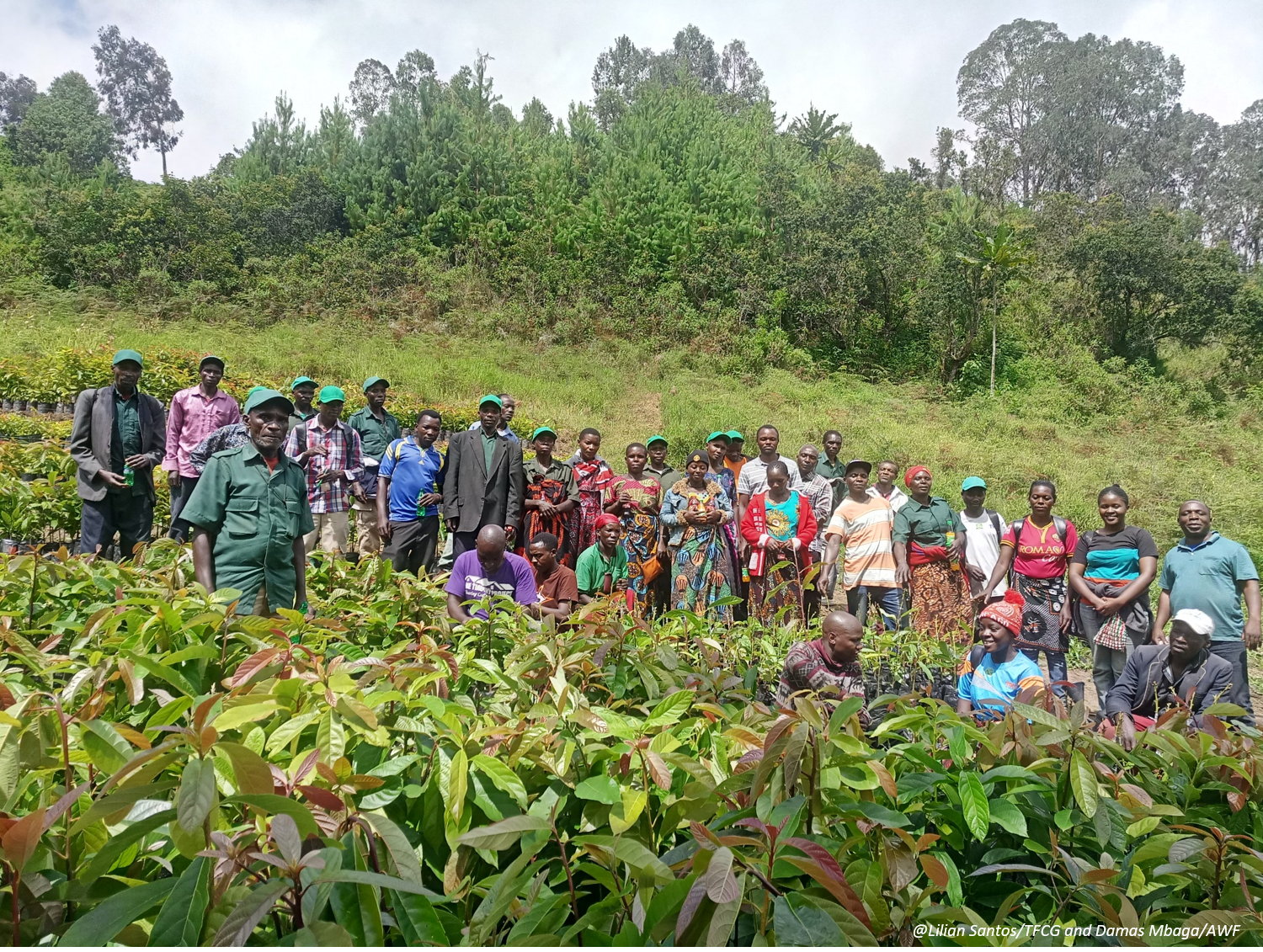
In 2019, AWF and partners organized community meetings to discuss the survey findings and formulate alternative but effective responses to climate change that will not have negative impacts on biodiversity. A forest restoration assessment performed by AWF and partners identified 38,656 ha of degraded areas in Kilombero’s Mngeta Valley suited to methods such as agroforestry, reforestation, afforestation, natural regeneration and riparian rehabilitation.
Guided by the assessment, AWF and the Tanzania Forest Working Group launched a reforestation activity targeting 1500 hectares involving communities in the Mngeta Valley in February 2020 where 22,347 tree seedlings were planted. Another 35,000 seedlings are yet to planted later in 2020. The reforested area will improve water provisioning to support agriculture and other activities while helping to reestablish ecological connectivity between the Kilombero Nature Reserve and Uzungwa Nature Forest Reserve where the valley lies.
The loss and destruction of natural habitat has been on the rise over the last decades. ABCG is working to stop this destruction by working together with the communities to develop interventions that would support them cope with climate change without affecting biodiversity.
For more information contact: dwilliams@awf.org
Related resources
For more information about the ABCG Global Change Impact work: Why its Important to Understand the effects of Humans Comping Responses to Climate Change on Nature
Climate change survey country reports: Climate Crowd
___________________________________________
The Africa Biodiversity Collaborative Group (ABCG) is a consortium of seven international conservation non-governmental organizations (NGOs): African Wildlife Foundation (AWF), Conservation International (CI), the Jane Goodall Institute (JGI), The Nature Conservancy (TNC), Wildlife Conservation Society (WCS), World Resources Institute (WRI) and World Wildlife Fund (WWF). ABCG is supported by USAID to advance understanding of critical conservation challenges and their solutions in sub-Saharan Africa.

